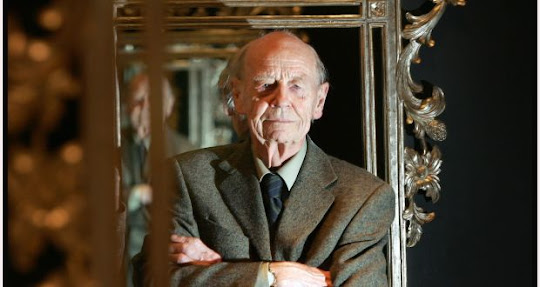 |
| William Trevor Photo by Brenda Fitzsimons. |
William Trevor: The master who hid his art
He could always reinvent and refresh his imagination and surprise his readers in story after story, novel after novel
William Trevor once described himself in modest terms as “a storyteller”, suggesting that his fiction “may, now and again, illuminate the human condition”. But his empathetic apprehension of that condition and its mysteries was one of his greatest gifts as a storyteller.
He was a writer ever at ease crossing boundaries in his portrayals of the human condition, boundaries of class and psychological disposition – from provincial Ireland and its rural hinterland to suburban London and English seaside towns, from the boarding house to the Big House. His evocation of an Italian setting in My House in Umbria was no less impressive.
He will of course be most remembered for his virtuoso’s command of the short story – he stands among the greatest in the genre – and the comparisons with Chekhov and Maupassant, made by several fellow writers, bear no exaggeration. However that monumental achievement should not overshadow the legacy he also leaves as a novelist.
His self-deprecating explanation that he wrote novels only when he couldn’t get their substance into short stories is too dismissive of what he accomplished in works such as Fools of Fortune, Mrs Eckdorf in O’Neill’s Hotel, Felicia’s Journey, The Story of Lucy Gault and several other award-winning novels.
While he was long settled in England, he carried within him keen perceptions of the nature of the Irish character that never failed him and made him a very singular voice.
What he called “the sadness of fate” became an abiding theme and was perhaps most memorably exemplified in his great depiction of despair: The Ballroom of Romance.
Misfits and failures were notable among his cast of characters and he himself believed that the writer who looked on life from the perspective of an outsider was better positioned to do the job.
Despair and the desolations of the human heart form the patterns of much of his writing. His sense of the darker side and of the more malign forces that motivate our actions was acute. Bleak scenarios could blossom into tales of haunting melancholy, but humour too was a tool in Trevor’s workshop. He had that most essential quality required of any good writer – an inquiring faculty that recognised human frailties.
He was, too, a master of the plot twist and could make characters of depth and complexity seem strangely familiar, but also had the ability to present his readers with figures who, like them, lived everyday lives.
He knew the value of understatement and the superb stylistic finish of his prose – an economy of language and clarity of expression – is one that might well have derived from what he learned in early life developing the honing skills of the sculptor: as he said of the short story, “Its strength lies in what it leaves out just as much as what it puts in”.
His prodigious output and the range of his talent in the course of a long career was remarkable in the way that he could always reinvent and refresh his imagination and surprise his readers in story after story, novel after novel.
The great Roman lyric poet Horace said that “the art lies in hiding the art” – William Trevor was the master of doing just that.
IRISH TIMES

No comments:
Post a Comment